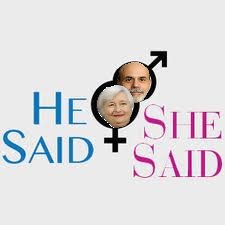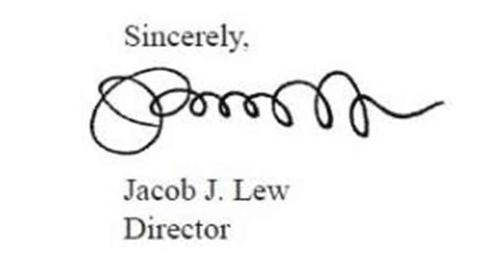
If you’re a fan of “American Exceptionalism” and can put aside the fact that the Shanghai stock market has made daily moves of 6% higher in the past few months on more than one occasion, you have to believe that the past week has truly been a sign of the United States’ supremacy extending to its stock markets.
We are, of optiocourse, the only nation to have successfully convinced much of the world for the past 46 years that we put a man on the moon.
So you tell me. What can’t we do?
What we can do very well is turn bad news into good news and that appears to be the path that we’ve returned to, as the market’s climb may be related to a growing belief that interest rate hikes may now be delayed and the party can continue unabated.
While it was refreshing for that short period of time when news was taken at face value, we now are faced with the prospect of markets again exhibiting their disappointment when those interest rate hikes truly do finally become reality.
Once the market came to its old realizations it moved from its intra-day lows hit after the most recent Employment Situation Report and the S&P 500 rocketed higher by 6% as a very good week came to its end on a quiet note.
While much of the gain was actually achieved when the Shanghai markets were closed for the 7 day National Day holiday celebration, it may be useful to review just what rockets are capable of doing and perhaps looking to China as an example of what soaring into orbit can lead to.
Rockets come in all sizes and shapes, but are really nothing more than a vehicle launched by a high thrust engine. Those high thrust rocket engines create the opportunities for the vehicle. Some of those vehicles are designed to orbit and others to achieve escape velocity and soar to great heights.
And some crash or explode violently, although not by design.
As someone who likes to sell options the idea of a stock just going into orbit and staying there for a while is actually really appealing, but with stocks its much better if the orbit established is one that has come down from greater heights.
That’s not how rockets usually work, though.
But for any kind of orbiting to really be worthwhile, those premiums have to be enriched by occasional bumps along the path that don’t quite make it to the level of violent explosions.
It’s just that you never really know when those violent explosions are going to come and how often. Certainly Elon Musk didn’t expect his last two rocket launches to come to sudden ends.
In China’s case those 6% increases have been followed by some epic declines, but that’s not unusual whenever seeing large moves in either direction.
As we get ready to start earnings season for real this week we may quickly learn whether our own 6% move higher was just the first leg of a multi-stage rocket launch or whether it will soon discover that there is precious little below to offer much in the way of support.
Prior to that 6% climb it was that lack of much below that created a situation where many stocks had gone into orbit, taking a rest to regain strength for a bounce higher. That temporary orbit was a great opportunity to generate some option premium income, as some of the risk of a crash was reduced as those stocks had already migrated closer to the ground.
While I don’t begrudge the recent rapid rise it would be nice to go back into orbit for a while and refuel for a slower, but more sustainable ride higher.
As usual, the week’s potential stock selections are classified as being in the Traditional, Double Dip Dividend, Momentum or “PEE” categories.
There aren’t too many data points to go on since that turnaround last week, but Apple (NASDAQ:AAPL) has been uncharacteristically missing from the party.
It seems as if it’s suddenly becoming fashionable to disparage Apple, although I don’t recall Tim Cook having given Elon Musk a hard time recently. With the opening of the movie, Steve Jobs, this week may or may not further diminish the luster.
Ever since Apple joined the DJIA on March 19, 2015 it has dragged the index 109 points lower, accounting for about 11% of the index’s decline, as it has badly lagged both the DJIA and S&P 500 during that period. The truth, however, is that upon closer look, Apple has actually under-performed both for most of the past 3 year period, even when selecting numerous sub-periods for study. The past 6 months have only made the under-performance more obvious.
With both earnings and an ex-dividend date coming in the next month, I would be inclined to consider an Apple investment from the sale of out of the money puts. If facing assignment, it should be reasonably easy to rollover those puts and continuing to do so as earnings approach. If, however, faced with the need to rollover into the week of earnings, I would do so using an extended weekly option, but one expiring in the week prior to the week of the ex-dividend date. Then, if faced with assignment, I would plan to take the assignment and capture the dividend, rather than continuing to attempt to escape share ownership.
In contrast to Apple, Visa (NYSE:V) which joined the DJIA some 2 years earlier, coincidentally having split its shares on the same day that Apple joined the index, actually added 49 points to the DJIA.
For Visa and other credit card companies there may be a perfect storm of the good kind on the horizon. With chip secured credit cards just beginning their transition into use in the United States and serving to limit losses accruing to the credit card companies, Visa is also a likely beneficiary of increasing consumer activity as there is finally some evidence that the long awaited oil dividend is finding its way into retail.
When it comes to bad news, it’s hard to find too many that have taken more lumps than YUM Brands (NYSE:YUM) and The Gap (NYSE:GPS).
Despite a small rebound in YUM shares on Friday, that came nowhere close toward erasing the 19% decline after disappointing earnings from its China operations.
YUM Brands was a potential earnings related trade last week, but it came with a condition. That condition being that there had to be significant give back of the previous week’s gains.
Instead, for the 2 trading days prior to earnings, YUM shares went higher, removing any interest in taking the risk of selling puts as the option market was still anticipating a relatively mild earnings related move and the reward was really insufficient.
Now, even after the week ending bounce, YUM’s weekly option premium is quite high, especially factoring in its ex-dividend state. As discussed last week, the premium enhancement may be sufficient to look into the possibility of selling a deep in the money weekly call option and ceding the dividend in order to accrue the premium and exit the position after just 2 days, if assigned early.
You needn’t look to China to explain The Gap’s problems. Slumping sales under its new CEO and the departure of a key executive from a rare division that was performing have sent shares lower and lower.
The troubles were compounded late this past week when The Gap did, as fewer and fewer in retail are doing, and released its same store sales figures and they continued to disappoint everyone.
Having gone ex-dividend in the past week that lure is now gone for a few months. The good news about The Gap is that it isn’t scheduled to report news of any kind of news for another month, when it releases same store sales once again, followed by quarterly results 10 days later.
The lack of any more impending bad news isn’t the best of compliments. However, unlike a rocket headed for a crash the floors for a stock can be more forgiving and The Gap is approaching a multi-year support level that may provide some justification for a position with an intended short term time frame as its option premiums are increasingly reflecting its increased volatility.
Coach (NYSE:COH) has earnings due to be reported at the end of this month. It is very often a big mover at earnings and despite some large declines had generally had a history of price recovery. That, however, hasn’t been the case in nearly 2 years.
Over the past 3 years I’ve owned Coach shares 21 times, but am currently weighed down by a single lot that is nearly 18 months old. During that time period I’ve only seen fit to add shares on a single occasion, but am again considering doing so as it seems to be building upon some support and may be one of those beneficiaries of increased consumer spending, even as its demographic may be less sensitive to energy pricing.
With the risk comes a decent weekly option premium, but I might consider sacrificing some of that premium and attempting to use a higher priced strike and perhaps an extended weekly option, but being wary of earnings, even though I expect an upward surprise.
The drug sector has seen its share of bad news lately, as well and has certainly been the target of political opportunism and over the top greed that makes almost everyone cringe.
AbbVie (NYSE:ABBV) is ex-dividend this week and is nearly 20% lower from the date that the S&P 500 began its descent toward correction territory. Since its spin-off from Abbott Labs (NYSE:ABT), which is also ex-dividend this week, AbbVie has had more than its share of controversy, including a proposed inversion and the pricing of its Hepatitis C drug regimen.
Shares seem to have respected some price support and have returned to a level well below where I last owned them. With its equally respectable option premium and generous dividend, this looks like an opportune time to consider a position, but I would like it as a short term holding in an attempt to avoid being faced with its upcoming earnings report at the end of the month.
Finally, Netflix (NASDAQ:NFLX) reports earnings this week and had been on a tear until mid-August, when a broad brush took nearly every company down 10% or more.
Of course, even with that 10% decline, Icahn Enterprises (NASDAQ:IEP), would have been far better off not having sold its shares and incurring its own 13% loss in 2015.
With earnings coming this week I found it interesting that Netflix would announce a price increase for new customers in advance of earnings. In having done so, shares spiked nearly 10%.
The option market is implying a 14% price move, however, a 1% ROI could possibly be achieved by selling a weekly put at a strike level 19% below Friday’s closing price.
That’s an unusually large cushion even as the option market has been starting to recover from a period of under-estimating earnings related moves in the past quarter.
While the safety net does appear wide, my cynical side has me believing that the subscription increase was timed to offer its own cushion for what may be some disappointing numbers. Given the emphasis on new subscriber acquisitions, I would believe that metric will come in strong, otherwise this wouldn’t be an opportune time for a price increase. However, there may be something lurking elsewhere.
With that in mind, I would consider the same approach as with YUM Brands last week and would only consider the sale of puts if preceded by some significant price pullback. Otherwise, I would hold off, but might become interested again in the event of a large downward move after earnings are released.
Traditional Stocks: Apple, The Gap, Visa
Momentum Stocks: Coach
Double-Dip Dividend: AbbVie (10/13), YUM Brands (10/14)
Premiums Enhanced by Earnings: Netflix (10/14 PM)
Remember, these are just guidelines for the coming week. The above selections may become actionable – most often coupling a share purchase with call option sales or the sale of covered put contracts – in adjustment to and consideration of market movements. The overriding objective is to create a healthy income stream for the week, with reduction of trading risk.

 It’s really hard to know what to make of the past few weeks, much less this very past one.
It’s really hard to know what to make of the past few weeks, much less this very past one.






